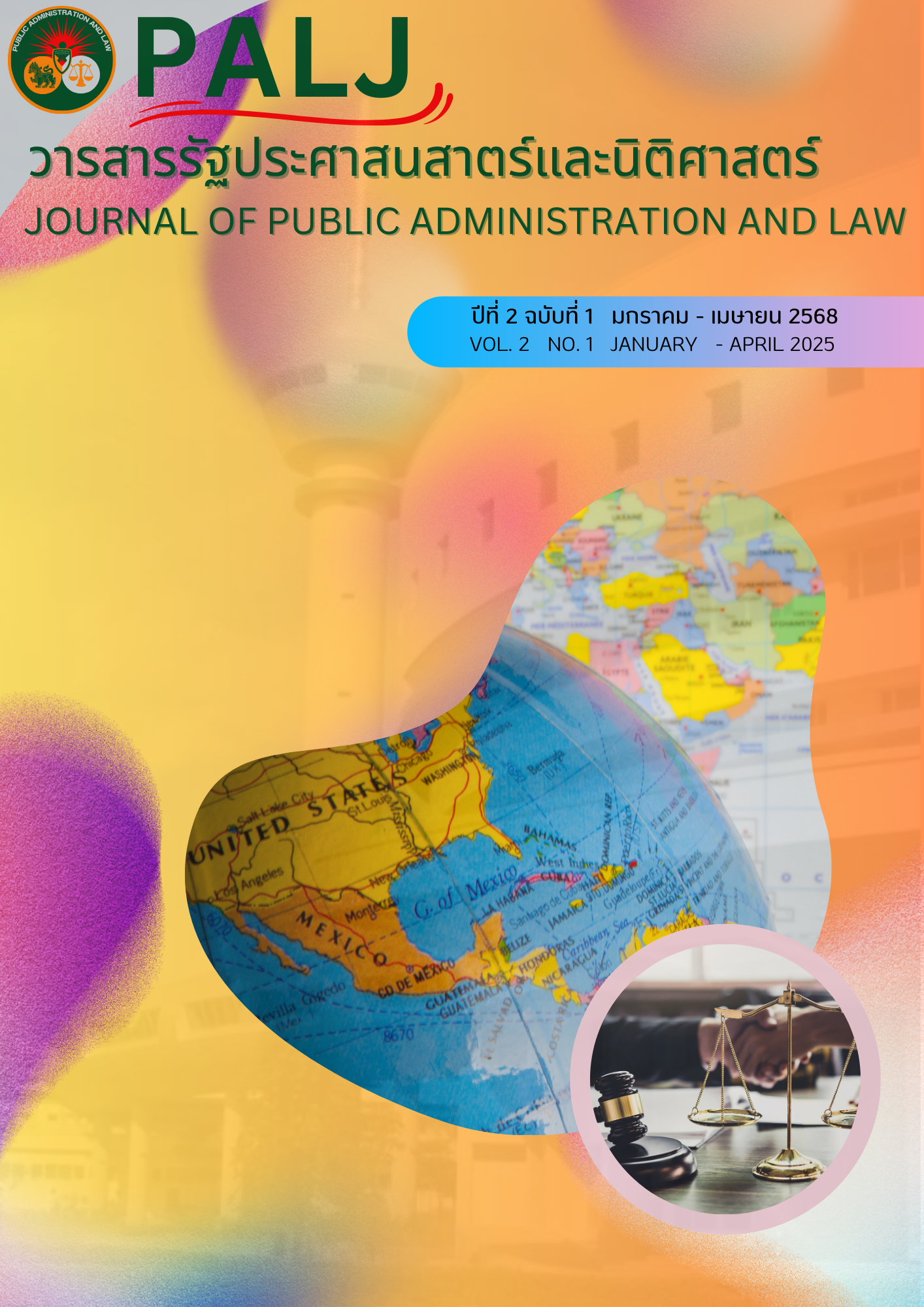DEVELOPING ACTIVITIES AND COLLABORATIVE NETWORKS FOR SUSTAINABLA CULTURAL TOURISM IN THE LOCAL COMMUNITY BASED ON BUDDHIST CULTURAL HERITAGE IN MYEANG CHONBURI DISTRICT, CHONBURI PROVINCE
Keywords:
Community Tourism, Activities and Collaboration Networks, Buddhist Cultural, Chonburi Province.Abstract
This research article aims to study the development of activities and cooperation networks for community tourism based on Buddhist cultural heritage in a sustainable manner in Mueang District, Chonburi Province. It is a mixed - method research combining both quantitative and qualitative approaches. Data were collected from 400 residents in Mueang District, Chonburi Province, and 25 key informants. Questionnaires and interviews were used as research tools. The data were analyzed using mean, standard deviation, and content analysis. The research findings indicate that
- The study of the potential and tourism routes is at a high level (= 4.09). It is recommended to focus on managing human resources in the community, improving roads and transportation routes to key tourist attractions, and promoting ecotourism that emphasizes environmental conservation.
- The development of tourism activities is at a high level (= 4.24). It is recommended to promote storytelling through community members, support organizing activities where local people convey knowledge about local rituals, and create connections with Buddhism and local culture that are significant to the community.
- The development of cooperation and tourism networks is at a moderate level (= 3.48). It is recommended to establish an information center or an online platform, create a central database related to Buddhist community tourism, and conduct surveys to assess the community's needs for necessary resources.
- The enhancement of tourism is at a high level (= 3.67). It is recommended to create access routes to temples or significant religious sites, ensure good quality roads, provide clear signage, showcase cultural and historical uniqueness, offer convenient public transportation for tourists, and ensure adequate facilities for visitors.
References
จิระพงค์ เรืองกุน และวิทยา นามเสาร์. (2563). สมรรถนะผู้นำกลุ่มท่องเที่ยวเชิงวัฒนธรรมของชุมชนท่องเที่ยวที่ประสบ ความสำเร็จในประเทศไทย. วารสารวิชาการการท่องเที่ยวไทยนานาชาติ. 16(2). 43 – 70.
ณัฐปภัสญ์ นวลสีทอง กมลรัตน์ ทองสว่าง และธนาวิทย์ กางการ. (2565). การท่องเที่ยวเชิงนวัตวิถีพุทธ. วารสาร มจร อุบลปริทรรศน์. 7(2). 1001 – 1010.
ธนาวดี ปิ่นประชานันท์, ชมพูนุท ภาณุภาส และจุฑาธิปต์ จันทร์เอียด. (2565). การพัฒนากิจกรรมการท่องเที่ยวเชิงสร้างสรรค์เพื่ออนุรักษ์วัฒนธรรม กลุ่มชาติพันธุ์อูรักลาโวยจ ในพื้นที่เกาะลันตา จังหวัดกระบี่. วารสารศิลปะการจัดการ. 6(3), 1348 – 1368.
บุญธรรม กิจปรีดาบริสุทธิ์. (2551). ระเบียบวิธีการวิจัยทางสังคมศาสตร์. พิมพ์ครั้งที่ 10. กรุงเทพมหานคร : จามจุรีโปรดักท์.
ประภาศรี เธียรธุมา, ดรรชนี เอมพันธุ์, นภวรรณ ฐานะกาญจน์พงษ์เขียว. (2565). ศักยภาพของแหล่งท่องเที่ยวและการรับรู้ของนักท่องเที่ยว กรณีศึกษา อ่าวไร่เลอุทยานแห่งชาติ หาดนพรัตน์ธารา-หมู่เกาะพีพี จังหวัดกระบี่. วารสารบริหารธุรกิจศรีนครินทรวิโรฒ. 13(1), 87 – 103.
วรวลัญช์ ดอกรัก และพชร สาตร์เงิน. 2566. แนวทางการจัดการการท่องเที่ยววิถีชุมชนอย่างยั่งยืน ตําบลถ้ำรงค์ อำเภอบ้านลาด จังหวัดเพชรบุรี. วารสารมณีเชษฐาราม วัดจอมมณี. 6(5), 462 – 480.
สำนักงานสภาพัฒนาเศรษฐกิจและสังคมแห่งชาติ. (2561). แผนแม่บทภายใต้ยุทธศาสตร์ชาติ (16) ประเด็นเศรษฐกิจฐานราก (พ.ศ.2561-2580). http://nscr.nesdc.go.th/masterplans-16/
อนุวัฒน์ ชมภูปัญญาและธนัสถา โรจนตระกูล. (2565). การพัฒนาศักยภาพชุมชนแบบมีส่วนร่วมสู่ชุมชนท่องเที่ยวที่ยั่งยืน. Journal of Modern Learning Development. 7(8), 414 – 430.
Eran , (2004). Network theory and small groups. Small Group Research. 35 (3), 307-332.
Pike, (2008). Destination Marketing : anintegrated marketing communication approach, Butterworth – Heinmann, Burlington, MA.


